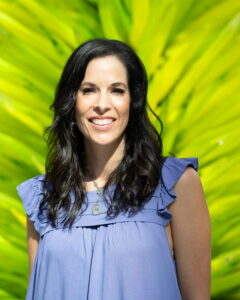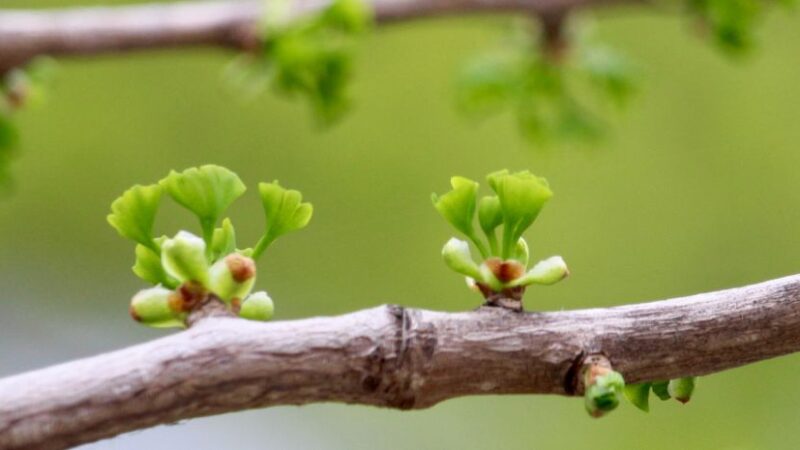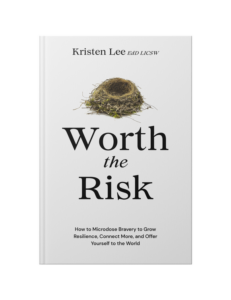The Gifts of Imperfect Parenting – with Brené Brown
We all know that perfect parenting does not exist, yet we still struggle with the social expectations that teach us that being imperfect is synonymous with being inadequate. These messages are powerful and we end up spending precious time and energy managing perception and the carefully edited versions of the families we show to the world.
On The Gifts of Imperfect Parenting: Raising Children with Courage, Compassion, and Connection, Dr. Brené Brown invites us on a journey to transform the lives of parents and children alike. Drawing on her 12 years of research on vulnerability, courage, worthiness, and shame, she presents 10 guideposts to creating what she describes as “wholehearted” families where each of us can continually learn and grow as we reach our full potential.
Mindfulness-Based Stress Reduction – now offered totally online!
Dear friends, we are honored and excited to bring you the first ever Mindfulness-Based Stress Reduction program delivered in a fully online format. Now you enjoy and benefit from the very same curriculum that has been offered in-person in the comfort of your own home, in a self-paced, interactive training program.
In 1979, Jon Kabat-Zinn founded the Stress Reduction Clinic at the University of Massachusetts to bring a form of meditation known as mindfulness into the medical mainstream. Mindfulness is a basic human quality, a way of learning to pay attention to whatever is happening in your life that allows you a greater sense of connection to your life inwardly and outwardly. Mindfulness is also a practice, a systematic method aimed at cultivating clarity, insight, and understanding. In the context of your health, mindfulness is a way for you to experientially learn to take better care of yourself by exploring and understanding the interplay of mind and body and mobilizing your own inner resources for coping, growing, and healing.
Nearly three decades of scientific research at medical centers all over the world suggest that training in mindfulness and MBSR can positively and often profoundly affect participants’ ability to reduce medical symptoms and psychological distress while learning to live life more fully.
Since its inception, more than 20,000 people have completed the MBSR training program. They have been referred by more than 5,000 physicians, by hundreds of other health care professionals, and through self-referral. These participants have been strongly motivated to do something for themselves—something no one else can do for them—by learning to draw upon their inner resources and natural capacity for greater health as well as balance, ease, and peace of mind.
The MBSR Online Course is the only complete online training in MBSR and follows the same, well-respected method taught at the Center for Mindfulness in Medicine, Health Care, and Society at the University of Massachusetts Medical School. This eight-week course offers the curriculum and methodology developed by Jon-Kabat Zinn and is taught by Center for Mindfulness director Dr. Saki Santorelli, and senior instructor Florence Meleo-Meyer.
The Mystery of Holding
There is an ancient longing wired in us as infants to be seen, to be felt, and to have our surging, somatic-emotional world validated by another. When our subjective experience is empathically held, contained, and allowed, we come to a natural place of rest. What is love, really, other than fully allowing the other to be who they are, for their experience to be what it is, and to offer the gift of presence to their unique subjectivity? In this sense, I love you = I allow you.
The late Donald Winnicott, a brilliant psychoanalyst from Britain, used the term ‘holding environment’ to describe the ideal mandala in which growth and development could occur, weaved of the qualities of contact and space. Through making attuned, present-time, somatically-engaged contact with another as they are – and by providing an open, warm sanctuary in which their experience can unfold and illuminate – we become vehicles of love in action.
Simultaneously, by offering the gift of space, we do not interfere with the unfolding of their heart and majestic inner process. We do not pathologize their experience or demand that they be different, change, transform, shift, or ‘heal’ in order for us to love them. If sadness is there, or fear, or despair, or shame, or depression, or profound grief, we will infuse their inner mandala with validation and presence. We will be there for them, but only if they need us. We will not engulf them with the projections of our own unlived life, nor will we unload upon them our own requirements and agendas, arising out of our own undigested psyches and bodies. Instead, we will seed the intersubjective container with tender space.
While not talked about as much, we can provide this same contact and space to ourselves and come to discover that our nature as awareness itself is in fact the ultimate holding environment. You are always, already resting in the majesty of presence and are always, already held – by the beloved – who is none other than your own miracle nervous system, heart, and somatic brilliance. While we may not always understand our experience – and while it may never fit into our ideas, hopes, dreams, and fantasies about the life we were ‘meant to live’ – we can come to trust that it is unfolding according to a unique blueprint which is emerging out of the unseen hand of love. We are invited to practice a radical intimacy with our experience, staying close to our ripe bodies and tender hearts, but not so close that we fuse or overly identify with it. Rest in the very middle and stay astonished at what is being birthed out of the unknown in every moment.
For so many I speak with, there is an undercurrent of aggression towards themselves, a subtle movement of self-loathing, unexamined shame and embarrassment, and a very alive (if not conscious) belief that they are flawed and have failed. Each time we exit our present, embodied experience into thinking, interpretation, blame, resentment, and complaint, we turn from the preciousness and the majesty of what we are. In this movement of rejection, we keep alive the archaic belief that our immediate experience is not valid, that it is not workable, that it is not forming the actual particles of the path of healing, exactly as it is. From one perspective, this may be seen as the ultimate act of self abandonment.
Let us all take a pause on this new day, and from a place of love visualize a holding environment for ourselves, where we grant unconditional permission to make intimate and direct contact with all of our vulnerabilities, with our tender bodies and with our raw hearts, with our unprocessed challenges from the past, and with our less-than-awakened thoughts, feelings, and behaviors.
Let us make the most radical commitment to no longer abandon ourselves, exiting into our conditioned stories and unkind judgments, and inquire with love into the habitual belief that there is something fundamentally wrong with us. As we open our eyes and our hearts to the always, already present holding environment which is our true nature, we behold the drop of grace which pours through the eyes of everyone we meet, including that unknown precious one that we see when we look in the mirror. And then all that could possibly remain is an unshakeable faith in love’s perfection.
When Pain is the Doorway – with Pema Chödrön
Friends, I wanted to let you know about a new audio program we just released from our dear friend Pema Chödrön. In my experience, Pema has a real gift at skillfully guiding a person into the heart of their immediate embodied experience, which is often right into those scary places that are so easily avoided. This work of embodied immediacy is so simple, really, yet not easy; in fact it actually requires everything we have… and a bit more.
Listen to a free audio sample/ learn more about our lovely new audio program with Pema, entitled When Pain is the Doorway.
What if the full sense of our aliveness were only to be found amidst our most challenging times and difficult experiences? In pain and crisis, teaches Pema, there lies a hidden doorway to freedom that appears to us only when we’re sure that there is no way out.
In these intimate audio learning sessions, Pema helps us distinguish the triggers or external events that we blame for our suffering from the deeper habitual patterns that feed our anger, fear, or sadness. From this understanding, we learn how to free ourselves from our propensity to suffer through the transformative awareness of impermanence—the dynamic and ever-shifting nature of both joy and suffering, self and selflessness—and the absolute and eternal flow from which all of it arises.
What is causing my pain? What will happen if I simply lean in, keep company with it, hold it with tenderness? Moment by moment, Pema supports and encourages listeners to bring an openhearted sense of curiosity and welcoming to our apparently impossible situations or unbearable relationships—to discover the deeper freedom available just beneath the surface.
For those experiencing emotional crisis, When Pain Is the Doorway provides expert guidance to help us stop, stay present, and enter into a more welcoming, spacious place of being that is our true home.

Meditation with Eckhart Tolle
Is it possible for meditation to be utterly effortless? To experience the depths of being in any given moment of our lives—not just while we practice? Not only is it possible, explains Eckhart Tolle, but it is the very way we come to touch the essence of meditation.
With Meditation: Practicing Presence in Every Moment of Your Life, we join this treasured teacher as he discusses the many methods of meditation and their shared purpose: accessing the richness and power of pure presence.
In its deepest sense, meditation is never a means to an end. It is about fully being and honoring the entire range of our experience—what Eckhart calls saying yes. Whether you’re just starting a practice or looking to go deeper than ever before, Meditation offers vital insights for anyone eager to taste the fruits of this revered discipline.
Be What You Want to Receive: Three Ways to Experiment with Microdosing Bravery
At a time when we’re marinating in trauma and dealing with the test of a lifetime, we all wish things were different. When what we want from life is a million mile march from what it actually is, it can seem like we need a massive intervention to keep facing what’s at hand.
But research shows that small things can make a big difference. Just like stress is cumulative, so are the daily steps we take to grow and give.
Microdoses of bravery add up. To start, consider moving from asking what will the world offer me, to what will I offer the world? Tiny bits of strategic courage are sources of nourishment that can help you become what you want to receive.
Getting comfortable with the uncomfortable is a tall order, but worth doing. Microdosing bravery can help us build the strength and stamina that helps us heal, create, and liberate from fear, despair, and isolation.
Here are three ways you can experiment with microdosing bravery including journal prompts for reflection.

BE LOVE.
Loneliness is being called “the new smoking,” a modern health risk. For some, the global pandemic has strengthened relationships, allowing for bonding and teamwork like never before. For others, it’s wreaked havoc: leading to feeling smothered and stuck. For those living alone, distancing has been brutal, making love feel far from reach. Loss, whether through death, divorce, breakups, or other factors, singes our hearts. We can become avoidant and skeptical of our future potential to love and be loved.
When we strive to embody love, it’s essential to keep an open mind and heart. Loving connections are protective factors to our well-being. Consider these microdoses of bravery to strengthen your relationships, your sense of belonging, and the co-creation of new love paradigms in your life:
- Get real. Go through your friends on social media and make a list of all the real people in your life with whom you can be yourself. Make a conscious effort to spend time outside of social media. Thank them for being so real to you and vow you’ll do the same.
- Spark connection. Initiate a conversation with a partner or friend to see if you can build greater intimacy or camaraderie. To improve your connection, ask them what would mean a lot to them, and offer your own thoughts too.
- Seek affinity relationships. Write a short poem or essay about yourself to clarify your various identities and then seek an affinity connection. Invite that person for coffee. Don’t shy away from sharing yourself and nudging them to do the same.
- Be innovative. Create your own bravery microdose to help you be love.
Take note:
Write down what you chose to do and reflect on how it cultivated love in your life. Consider sharing this with someone you trust to help you maximize your efforts.
BE HEALING.
The level of trauma at hand has ravaged our lives, making healing feel elusive on a good day, impossible on a bad. Given the magnitude of suffering at hand, healing should not be trivialized as a three-step process. Healing requires enormous courage. Microdosing bravery can help us reach out and tap in to the many forms of restoration available to us.
Understanding how resilience works is a helpful way to begin healing. Gone are the days when it was viewed as a character trait—something you’re born with or not. There’s a lot of hype about being gritty and never letting anyone see you sweat that gets in the way of us finding the right support. Here are some ways to microdose bravery to foster healing and build resilience:
- Recognize you’re not alone. The biggest lie our difficulties tell us is that we’re the only ones dealing with such intense suffering. All of us are living in a global mental health crisis, with exorbitant pressures and crushing circumstances. Suffering is part of our shared humanity. Finding solidarity and safe community can serve as a catalyst to healing. As we get traction in our own healing process, our acts of courage can be nourishing and healing to those around us.
- Self-advocate. Healing requires intentional change in our communication. Many of us are comfortable and willing to give help, but few are asking for it. Identify one trusted person in your life that you know has the emotional maturity and skills to listen and support you. Tell them what you’re going through and work with them to identify potential roads toward healing, such as therapy, strategic behavioral change, and targeted self-care.
- Set boundaries. Untreated trauma and unresolved issues can haunt us and impair the quality of our lives. By paying attention to what we say yes and no to, we can ensure we are leaving space for growth after we’ve gone through significant stressors. Find language to courageously share what you can commit to, and what you cannot. Enlist support to help you firmly protect your time so that you can devote attention to healing and restoration.
- Identify resources. Take some time to scan your direct environment for things that nurture and sustain you. Select one or two things that can be microdosed to build your bravery.
Take note:
Write down things that help you experience healing. How can you continue to build off this?
BE A LIBERATOR.
Society can project a lot onto us, caging us into patterns of conformity that can become harmful. Freedom to live as our truest selves isn’t something that comes with safety or ease. The work of unhooking from social prescriptions and ills can be fraught and exhausting. Still, when we find the courage to call out injustice and fight for a more humane world, we can experience exuberance and help change paradigms.
When we strive to liberate, we realize that we must dismantle oppression. That we must advocate for inclusivity and human reverence, particularly for social identities that are marginalized and harmed. Constrained living hinders human progress, individually and collectively. Consider these microdoses of bravery to liberate from social constructs that are harmful:
- Let go. Take inventory of so-called social “norms” and become less apt to cower in the face of social impositions that are dismissive and destructive toward “difference.” Embrace your own multidimensionality, and that of humanity.
- Speak up. We all have opportunities to be active contributors rather than passive bystanders in the world. Practicing accountability means that we call out injustice and work to eradicate forms of human suffering and imprisonment—whether based on race, gender, orientation, age, place of origin, or other social identity categories.
- Practice human reverence. Move from me to we. See the glory and wonder across the human spectrum. Honor varied identities and perspectives. Work to find and engage in diverse relationships, rather than staying insular or spending time with those that look like, love like, and think like you. Become a liberator by standing fervently with those who’ve been marginalized, oppressed, or discriminated against. Seek ways to forge change, bit by bit.
- Break Free. Create your own bravery microdose to help you liberate.
Take note:
What do you need to be liberated from? Do you know someone who is struggling in a similar way? How might you join forces and work together to become freer?
 Kristen Lee, EdD, LICSW, is an award-winning Behavioral Science and Leadership professor, clinician, researcher, activist, comedian, author of Worth the Risk: How to Microdose Bravery to Grow Resilience, Connect More, and Offer Yourself to the World, and host of Crackin’ Up. She has over two decades of clinical experience in mental health, and twelve years of teaching and leadership roles in higher education, focusing on underserved populations. She leads the Behavior Science program at Northeastern University. For more, visit kristenlee.com.
Kristen Lee, EdD, LICSW, is an award-winning Behavioral Science and Leadership professor, clinician, researcher, activist, comedian, author of Worth the Risk: How to Microdose Bravery to Grow Resilience, Connect More, and Offer Yourself to the World, and host of Crackin’ Up. She has over two decades of clinical experience in mental health, and twelve years of teaching and leadership roles in higher education, focusing on underserved populations. She leads the Behavior Science program at Northeastern University. For more, visit kristenlee.com.
Learn More
Amazon | Barnes & Noble | IndieBound | Bookshop | Sounds True




